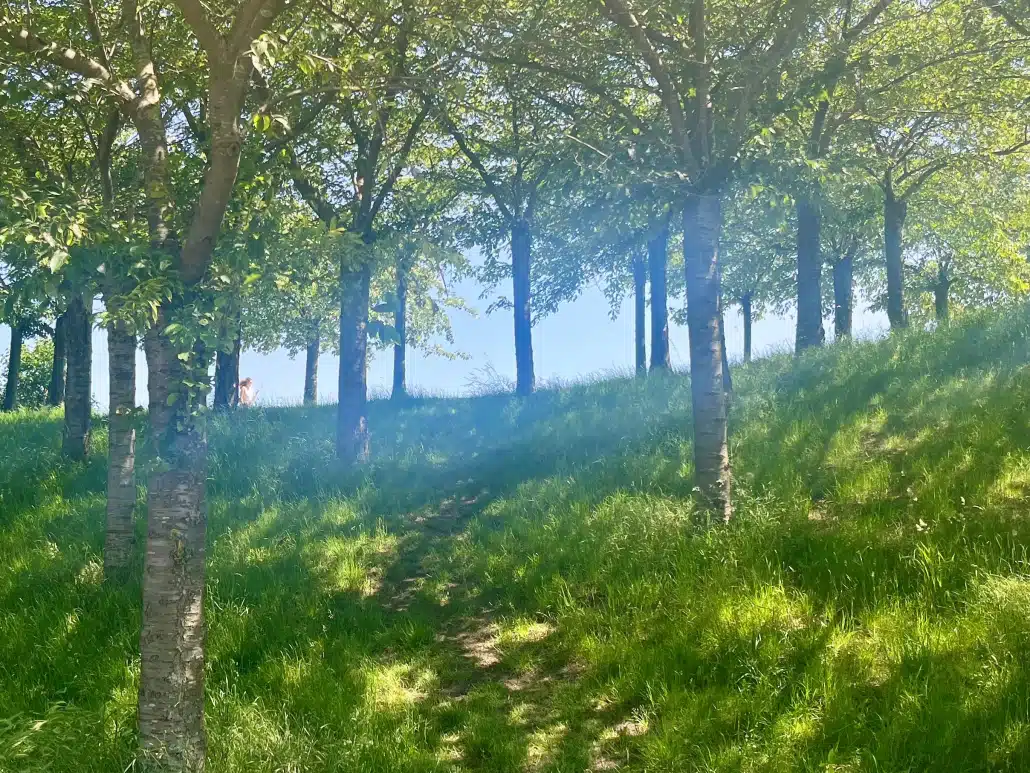Desire Paths and Leadership: Why leaders don’t always have to stick to the pavement
We’ve all seen them. A muddy shortcut across a pristine lawn, or a well-trodden track weaving its way between the official walkways. What you may not know is that they have a name, Desire Paths, informal trails forged not by design, but by instinct. They show us where people really want to go, and are the source of a secret interest to this writer.
Desire paths are a familiar feature of parks, campuses, and city spaces, but do they offer more than just a shortcut? Could they hold lessons for how leadership really works? Because while it’s easy to follow the route that’s been laid out for you, the most impactful leaders know when to step off the path and carve their own.
At Maier, we’re interested in how leaders make change feel not only possible but purposeful. And we believe that thinking like a desire path-maker, curious, responsive and understatedly bold, can help leaders lead in new, maybe more effective, ways.
Why Desire Paths Matter
Desire paths emerge when there’s a mismatch between how things are designed to work and how people actually want to move through the space, they’re a reminder that the official route isn’t always the best one.
The same principle can apply to leaders, just because something is how it’s always been done, doesn’t mean it’s right for now. Holding on too tightly to traditional ways of working can at times slow progress, stifle innovation, and leave people feeling disconnected.
Great leaders notice the subtle signs—the unofficial ways their teams collaborate, the quick fixes that keep things moving, the informal conversations that spark real ideas. Like a landscape architect observing footfall before laying concrete, they take time to see where energy is already flowing and make the most of that.
What desire paths can teach us about leadership?
- Observe the real, not just the ideal
Official processes can feel tidy on paper, but real life is rarely so neat. Don’t just ask “What should people be doing?”, ask “What are they doing?” Notice where the ground is being worn, and be curious about it, pay attention to behaviour over intention. Let what’s working well, even unofficially, inform your approach.
- Don’t be afraid to tread a new path
Every desire path starts with someone stepping off the official route, it takes courage to be the first to try something different. Leadership often means challenging the status quo and being willing to take a smarter, more human route, even if it’s messier. Give yourself space to explore
- Make space for collaborative experiences
Desire paths are formed by many feet, not just one. In the same way, leaders don’t need to have all the answers but rather they just need to listen to the wisdom of their teams. The best ideas often come from the ground up, encourage others to co-create the path forwards.
- Redesign with people, not just for them
The most responsive planners don’t fight desire paths—they pave them. They acknowledge that people have found a better way. In leadership, this means being flexible and willing to refine strategies, roles, or systems to fit how people really work best.
- Some ‘shortcuts’ are just better
Desire paths might look like rule-breaking, but they often reveal where systems are inefficient or overengineered. Leaders who dismiss them risk missing opportunities to simplify and streamline, if people are bypassing the process, the process might be the problem.
Paving Desire Paths Into Practice
Leadership isn’t always about rigidly sticking to the map, it’s also about sensing where people are, where they need to go, and how best to support that by noticing the informal rhythms of your team, the creative workarounds, the hidden frustrations—and responding appropriately.
If you’re a leader looking to do things differently notice the desire paths in your organisation. What’s being avoided? What’s being done unofficially? Where is energy flowing more naturally?
You might just find that the future of your leadership isn’t in laying down more rules—but in clearing the way for something that’s already emerging.
Find out how Maier can help you on your leadership path: Maier | Leadership Development Consultancy | What We Do



